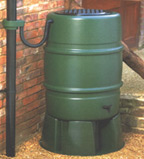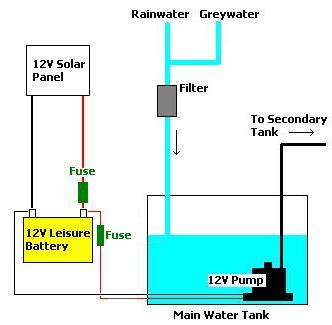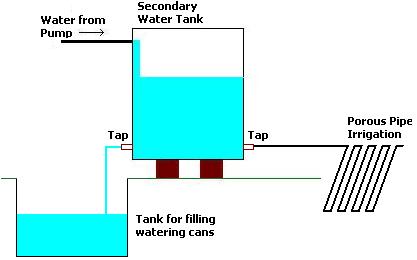
With hosepipe bans becoming more frequent thanks to global warming, more and more people are starting to collect rainwater and greywater for use in their gardens. The only problem is getting the water from where it is collected and stored, to where it is needed.
Rainwater collection is one of the easiest ways you can save water, money, and energy. Whether collecting rain in an old dustbin, a water butt, or filling a 5,000 gallon tank under your home, there is something that everyone can do. Depending on the size of your home and the amount of rain in your region, it is possible to harvest large amounts of rain water and therefore make considerable savings on your water bill quickly covering any initial expenditure.

Rainwater is much better for your garden than the treated drinking water that comes from your tap, and can be used free of hosepipe bans and other water use restrictions. Also rainwater is a renewable resource whereas the water from your tap often is not. If more water is drawn from an underwater lake for example than can be replaced by the rain then that is not sustainable.
Solar power is absolutely perfect for use with irrigation systems for gardens,allotments , greenhouses , and polytunnels . When the sun is shining you need more water and so the solar power is there for the pump. By adding a suitable deep-cycle leisure / marine battery, power can be made available 24 hours per day enabling watering in the evening - the best time to water plants in the summer so that the water has a chance to soak into the ground.
A typical solar irrigation system is made up of the following components:
-Deep cycle leisure or marine battery
-Tubing to carry the water
-PV Solar Panel
-12V Pump
The switch to turn on the pump can be located beside the secondary tank so that it can be switched on and off easily. This can be achieved using a run of cheap bell wire or, if you are electronically-minded a wireless doorbell can be converted to activate the pump remotely.
Plans For Solar Irrigation System
This first illustration shows the solar part of the irrigation system plus the pump used to send the water from the main water tank to the secondary tank at the location where watering is to take place. The panel and battery can easily be located at/in a shed or outhouse and the main tank underground if visual impact is likely to be an issue.


1 comments:
Great blog, thank you for sharing information
Solar Roof Panels
Home Solar Panel Systems
Solar Installers Near Me
Buy A Solar Panel For Home
Post a Comment